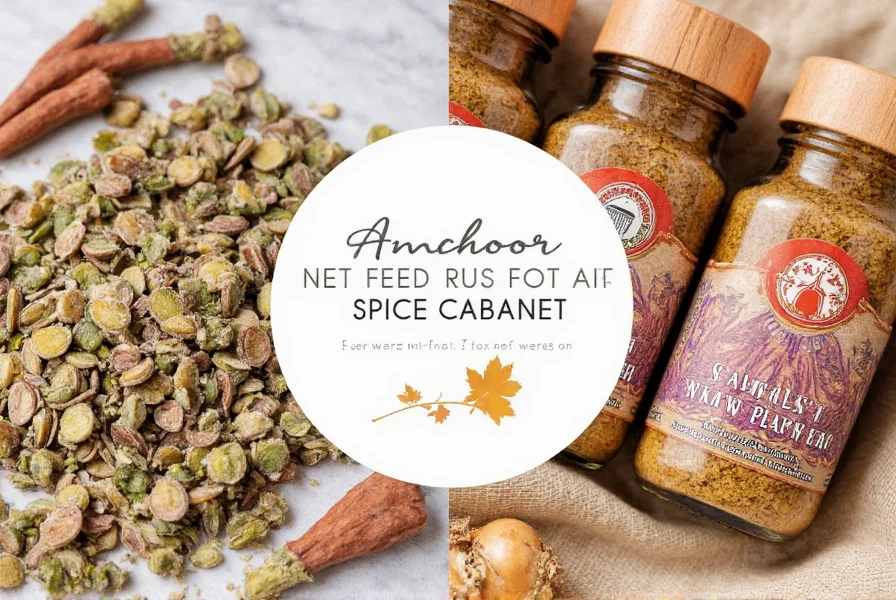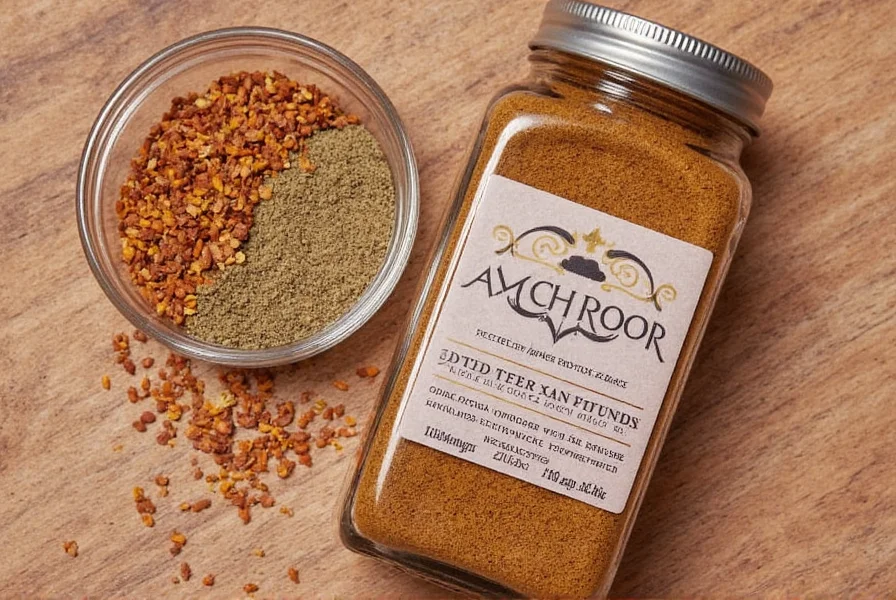Amchoor: A Tangy, Vitamin-Rich Spice for Every Kitchen
Amchoor is a dried mango powder made from unripe green mangoes, widely used in Indian cuisine for its bright, citrusy tang without adding moisture. It's a natural source of vitamin C (approximately 36.4 mg per 100g according to the USDA National Nutrient Database) and aids digestion, making it a versatile ingredient for balancing flavors in both savory and sweet dishes.
Taste, Texture & Aroma: How Amchoor Stands Out
Amchoor delivers a clean, citrusy tartness with subtle earthy notes—similar to a blend of unripe mango and dried lime. It enhances other flavors without overpowering them, much like vinegar in a salad dressing.
| Aspect | Description |
|---|---|
| Taste | Tart, mildly sweet, with earthy undertones |
| Texture | Fine, soft powder, similar to cornstarch |
| Aroma | Earthy-mango fragrance, slightly floral when fresh |
This profile makes amchoor essential in North Indian dishes like chole, kebabs, and pickles, where acidity is needed without liquid.

Top 5 Ways to Use Amchoor in Everyday Cooking
Whether simmering stews, grilling proteins, or baking flatbreads, amchoor adds complexity without moisture. Here are five versatile uses:
- Dal & Lentil Dishes: A pinch balances sweetness and reduces heaviness in lentil soups.
- Kebabs & Grilled Meats: Mix with garam masala, ginger, and garlic for tenderizing and zesty flavor.
- Vegetable Stir-Fries: Sprinkle over sautéed greens or potatoes for instant brightness—no extra lemon needed.
- Baking Flatbreads: Add to tandoori-style naan or kulcha dough to control fermentation and enhance texture.
- Pickling & Chutneys: Use in homemade mango or mint chutney for a tangy kick that complements grilled foods.
Buying Guide: Picking the Perfect Amchoor Powder
Quality varies significantly. Follow these tips for the best amchoor:
- Check Color: Opt for off-white to light beige. Avoid yellow or brown shades (signs of aging).
- Smell Test: Fresh amchoor has a bright, tangy aroma. Stale or musty smells indicate poor quality.
- Brand Reliability: Trusted brands like Everest or Swad ensure consistency. For authenticity, choose organic or artisanal varieties from South Asian markets.
- Read Labels: Select products with only one ingredient: dried mango powder. Avoid additives like starch or preservatives.
| Product | Features | Advantages | Best For |
|---|---|---|---|
| Everest Amchoor | Well-known brand, widely available | Consistent quality, affordable | Everyday use in curries and gravies |
| Swad Organic Amchoor | Organic certified, fine texture | Chemical-free, long shelf life | Health-conscious cooks and picklers |
| Artisan Handmade Amchoor | Locally sourced, sun-dried | Intense flavor, sustainable | Chefs and gourmet food lovers |

How to Store Amchoor for Maximum Shelf Life
Proper storage preserves potency and flavor. Follow these steps:
- Store in an airtight container away from sunlight and humidity.
- Keep in a cool, dark pantry or spice drawer—glass jars work best.
- In humid climates, refrigerate or freeze for extended freshness.
- Avoid wet spoons to prevent clumping and mold.
Stored correctly, amchoor maintains quality for 18–24 months. Always check for dull color, musty smell, or clumping before use.
Frequently Asked Questions About Amchoor
How much amchoor should I use in recipes?
Start with 1/4 to 1/2 teaspoon per serving. Amchoor is potent, so add gradually. For soups and stews (4-6 servings), begin with 1/2 teaspoon and adjust to taste.
Can I substitute amchoor with lemon juice?
Yes, but lemon adds moisture and alters texture. Use half the amount: for every 1/2 teaspoon of amchoor, substitute 1 teaspoon of lemon juice.
Is amchoor good for digestion?
Traditionally used in Ayurvedic cooking for digestion support due to its enzyme and fiber content. According to the USDA, green mangoes are rich in nutrients that aid digestive health (source: USDA National Nutrient Database). Consult a healthcare professional for medical advice.
Does amchoor have vitamin C?
Yes, it retains much of the vitamin C from raw green mangoes. The USDA reports approximately 36.4 mg of vitamin C per 100g in green mangoes (source: USDA National Nutrient Database), making it a healthy flavor booster.
Can I make amchoor at home?
Absolutely! Slice firm, green mangoes (no yellow spots), dry them in the sun until brittle, then grind into powder. Store in a sealed jar. Ensure complete dryness before grinding for best results.
Can amchoor go bad? How do I know if it's expired?
Amchoor doesn't spoil but loses potency over time. Signs of degradation include dull color (dark yellow or brown), musty smell, or clumping from moisture. Properly stored, it lasts 18–24 months.
What are the best dishes to use amchoor in?
Amchoor excels in lentil dishes (dal), vegetable curries, tandoori meats, and chutneys. It's ideal for dry preparations where liquid would dilute flavor, like spice rubs or dough for flatbreads.
Why Amchoor Belongs in Your Kitchen
Though often overlooked, amchoor is a powerhouse spice that balances flavors, boosts nutrition, and works in countless dishes. Its unique ability to add tang without moisture makes it indispensable for authentic Indian cooking and global fusion recipes. Start experimenting today—your taste buds will thank you.










 浙公网安备
33010002000092号
浙公网安备
33010002000092号 浙B2-20120091-4
浙B2-20120091-4